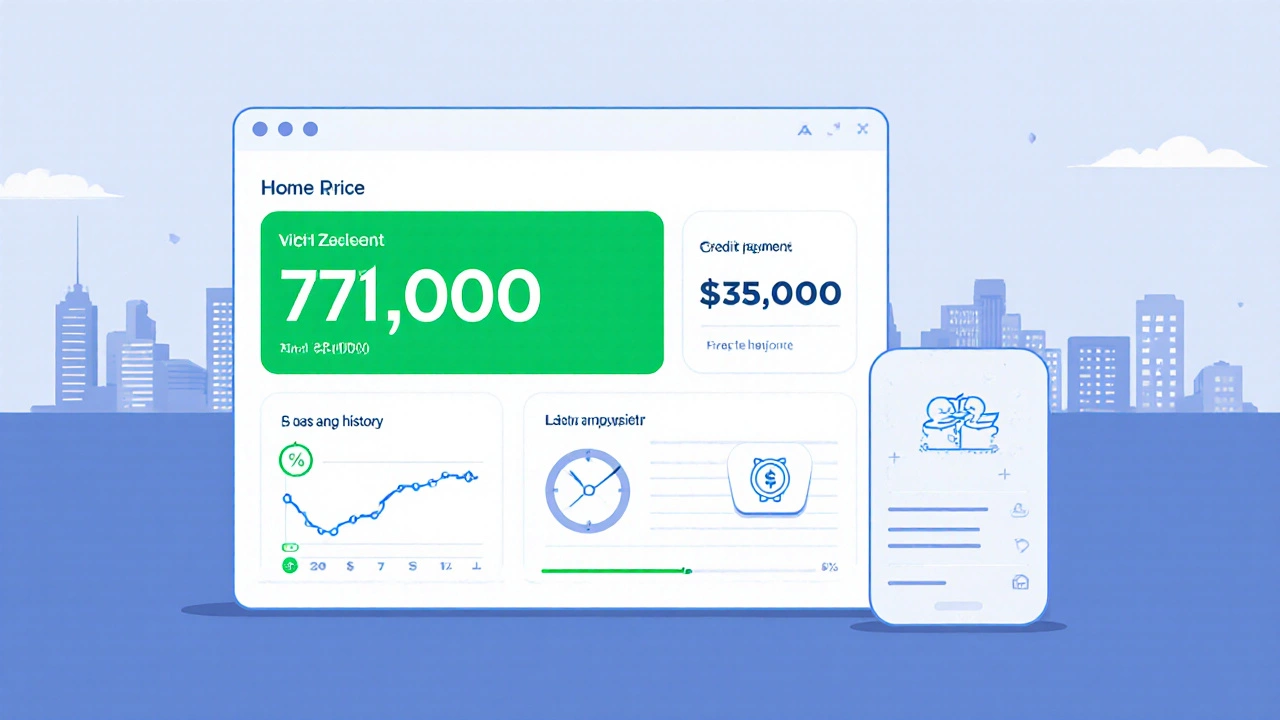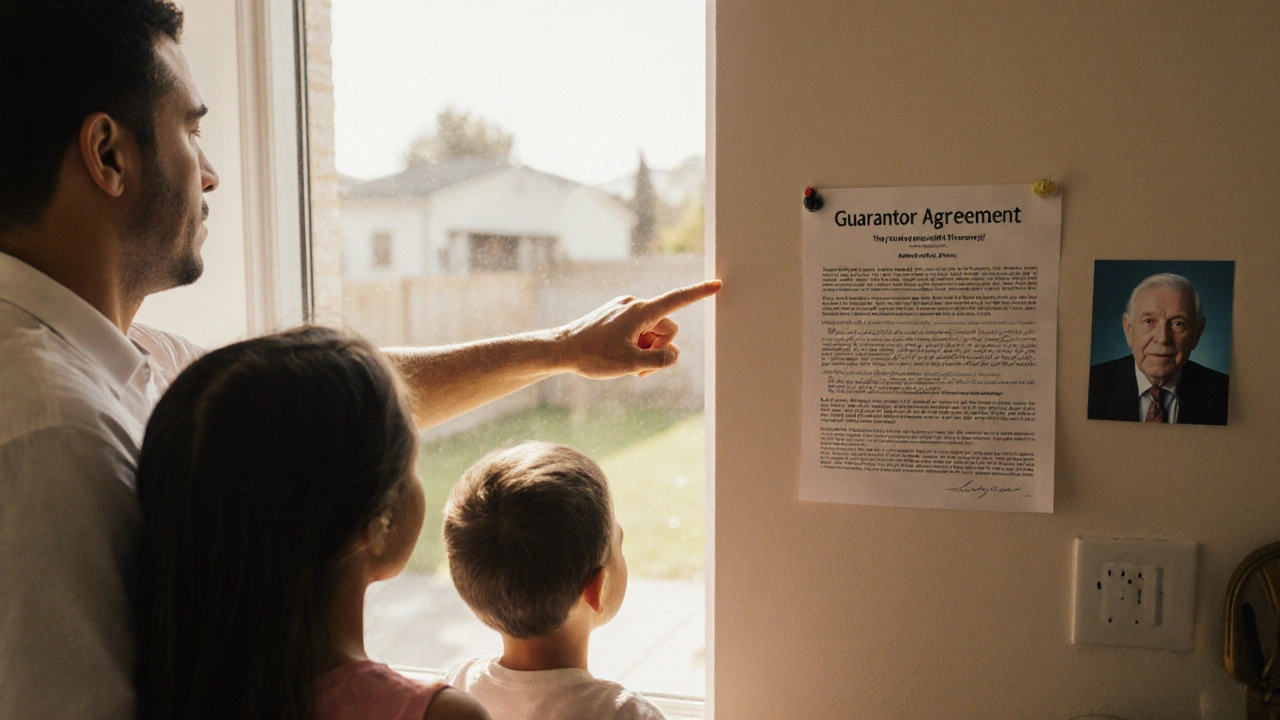You’ve been saving for months. You’ve checked off every box on your first-time buyer checklist. But now you’re staring at a house you love-and the bank says you need 10% down. Is that really required? Or is there a way around it?
The short answer: No, you don’t always need 10% down to buy a house in New Zealand. But the real answer is more complicated. It depends on your income, your credit, your loan type, and whether you’re buying in Auckland or a smaller town. Let’s cut through the noise.
What’s the actual minimum deposit in New Zealand?
In 2025, most banks still require a 20% deposit for investment properties. But for first-time buyers, the rules are different. The Reserve Bank of New Zealand lifted the Loan-to-Value Ratio (LVR) restrictions for first-home buyers back in 2023. Since then, banks have been allowed to lend up to 90% of a property’s value to eligible first-time buyers.
That means you can buy a home with as little as 5% down-if you meet the criteria. For example, if you’re buying a $700,000 house, you’d need $35,000 in savings, not $70,000.
But here’s the catch: the 5% option isn’t available everywhere. It only applies to homes under $800,000 in most regions. In Auckland, the cap is $950,000. If you’re looking at a $1.1 million home, you’ll need at least 10% down-even if you’re a first-time buyer.
Why do banks care about the deposit size?
Banks aren’t trying to make your life harder. They’re protecting themselves. A smaller deposit means you have less skin in the game. If house prices drop, you could end up owing more than your home is worth. That’s called negative equity-and it’s risky for lenders.
That’s why they use LVR limits. A 90% LVR loan (5% down) is considered high-risk. So banks add extra checks. You’ll need:
- A clean credit history with no missed payments in the last 12 months
- Stable, verifiable income-usually two years of payslips or tax returns
- A savings history showing you’ve been putting money aside for at least three months
- Proof you’ve received financial advice from a licensed advisor
Some banks also require you to complete a first-home buyer education course. These aren’t just hoops to jump through. They’re designed to make sure you understand what you’re signing up for.
What if you only have 3% saved?
There’s no legal barrier to buying with 3% down-but there’s a practical one. No bank in New Zealand currently offers 97% LVR loans to first-time buyers. The lowest they’ll go is 90%.
So if you’ve only saved 3%, you’re stuck. You can’t buy yet. But you’re not out of options.
One common path: use the First Home Grant. If you’re buying a new build under $800,000 (or $950,000 in Auckland), you could qualify for up to $10,000 if you’re single, or $20,000 if you’re a couple. That grant can cover part of your deposit. Combine it with your savings, and you might hit the 5% threshold.
Another option: get a guarantor. A parent or close relative can use their home equity to secure part of your loan. This reduces the bank’s risk. Some lenders allow you to buy with as little as 2% down if you have a guarantor. But this puts your family’s home on the line. It’s not a decision to make lightly.

Does putting down more than 5% help?
Yes-but not always in the way you think.
Putting down 10% doesn’t automatically lower your interest rate. Banks don’t give discounts based on deposit size alone. But here’s what does change:
- Lower monthly repayments: A bigger deposit means a smaller loan. That cuts your monthly payment. For a $700,000 home, going from 5% to 10% down saves you about $200 a month on a 30-year fixed loan.
- More borrowing power: If you have a 10% deposit, some lenders will let you borrow more against your income. That gives you flexibility if you want to buy a slightly bigger house.
- Less stress: You’re less likely to be caught out if interest rates rise or your income drops. A 10% deposit gives you a buffer.
And if you’re buying in a hot market like Wellington or Christchurch, sellers often prefer buyers with larger deposits. It signals you’re serious and less likely to fall through.
What about government schemes?
New Zealand has three main programs for first-time buyers:
- First Home Grant: Up to $10,000 or $20,000. Available for new builds under $800,000 (or $950,000 in Auckland). You must have saved for at least 12 months.
- First Home Loan: Offered by Kāinga Ora. Allows 5% down on homes under $700,000 (or $850,000 in Auckland). Income caps apply: $95,000 for singles, $150,000 for couples.
- First Home Partner: Kāinga Ora co-owns your home with you. You put down 5%, and they put in 20%. You pay rent on their share. You can buy them out later.
These aren’t handouts. You still need to repay the loan. But they make homeownership possible when you wouldn’t otherwise qualify.

When should you wait and save more?
It’s tempting to rush into a house because you think prices will keep rising. But buying with only 5% down can backfire.
If your job is unstable, or you’re planning to move in the next two years, a small deposit puts you at risk. You’ll pay mortgage insurance (called Lender’s Mortgage Insurance, or LMI). That’s a one-time fee-usually 1.5% to 3% of the loan amount. On a $665,000 loan, that’s $10,000 to $20,000 extra.
And if you get hit with a surprise bill-like a broken water heater or a sudden rent increase-you won’t have savings left. That’s when people get into trouble.
Waiting six more months to save an extra $5,000 might mean buying a slightly smaller house. But it also means you’ll sleep better at night.
What do lenders actually look at?
Banks don’t just check your deposit. They run a full financial scan:
- Debt-to-income ratio: Your total monthly debt (credit cards, car loans, student loans) can’t be more than 40% of your income.
- Living expenses: Lenders use a standard expense calculator. Even if you live frugally, they assume you spend $1,200 a month on food, transport, and bills.
- Savings history: They want to see you’ve been saving consistently-not a lump sum you just borrowed from your mum.
- Employment stability: If you’ve changed jobs three times in two years, you might need to wait.
One real example: A couple in Hamilton saved $30,000 for a $450,000 home. That’s 6.7% down. They had steady jobs, no debt, and a 780 credit score. The bank approved them. But their friend in Tauranga saved $25,000 for a $400,000 house-still 6.25% down. They got denied because one of them had a missed credit card payment six months ago.
It’s not about the number. It’s about the whole picture.
Bottom line: 10% isn’t mandatory-but it’s smart
You don’t need 10% down to buy a house in New Zealand. The minimum is 5%-if you qualify. But 10% gives you breathing room. It lowers your repayments, removes mortgage insurance, and makes you a stronger buyer.
Don’t feel pressured to hit 10% if you’re not ready. But don’t rush into 5% either. Ask yourself: Can I handle a $500 increase in my mortgage next year? Do I have three months of living expenses saved? Am I buying this house to live in, or just to chase price growth?
Homeownership isn’t about hitting a magic number. It’s about building a life you can afford to keep.
Can I buy a house with 5% down in New Zealand?
Yes, first-time buyers can buy with 5% down if the property is under $800,000 (or $950,000 in Auckland) and you meet income, savings, and credit requirements. Banks require proof of stable income, a clean credit history, and financial advice before approving these loans.
Is there a government grant to help with the deposit?
Yes, the First Home Grant offers up to $10,000 for singles and $20,000 for couples buying a new build under $800,000 (or $950,000 in Auckland). You must have saved for at least 12 months and meet income limits. The grant can be used as part of your deposit.
Do I need mortgage insurance with a small deposit?
Yes, if you put down less than 20%, most lenders require Lender’s Mortgage Insurance (LMI). This protects the bank, not you. The cost is usually 1.5% to 3% of the loan amount and is added to your mortgage. For a $665,000 loan, that’s $10,000-$20,000 extra.
Can I use a guarantor to reduce my deposit?
Yes, some lenders allow a guarantor-usually a parent-to use their home equity to cover part of your loan. This can let you buy with as little as 2% down. But if you default, the guarantor’s property is at risk. Get legal advice before doing this.
What’s the difference between First Home Loan and First Home Grant?
The First Home Grant is a cash payment you receive to help with your deposit. The First Home Loan is a low-deposit mortgage offered by Kāinga Ora with 5% down, but it has strict income limits ($95,000 for singles, $150,000 for couples) and property price caps. You can use both together in some cases.
Should I wait to save more than 5%?
If your income is stable and you’re ready to settle, 5% is enough. But if you’re unsure about job security, have high debt, or plan to move soon, waiting to save 10% reduces your risk. A larger deposit means lower repayments, no mortgage insurance, and more financial breathing room.
